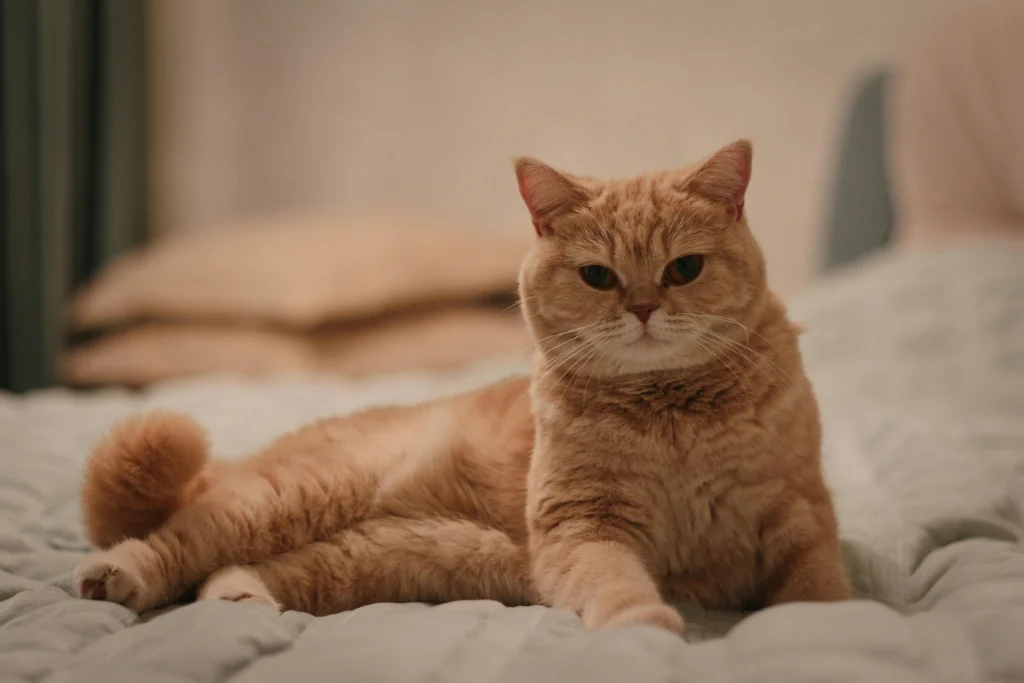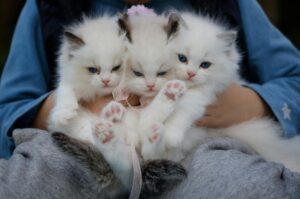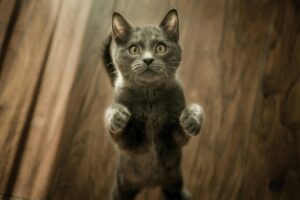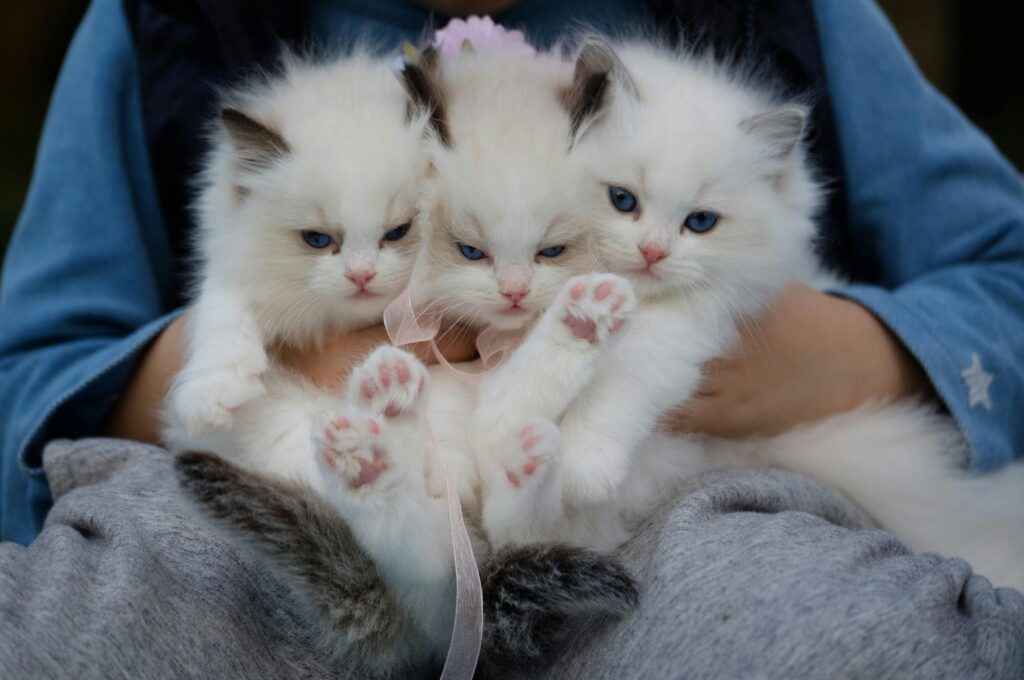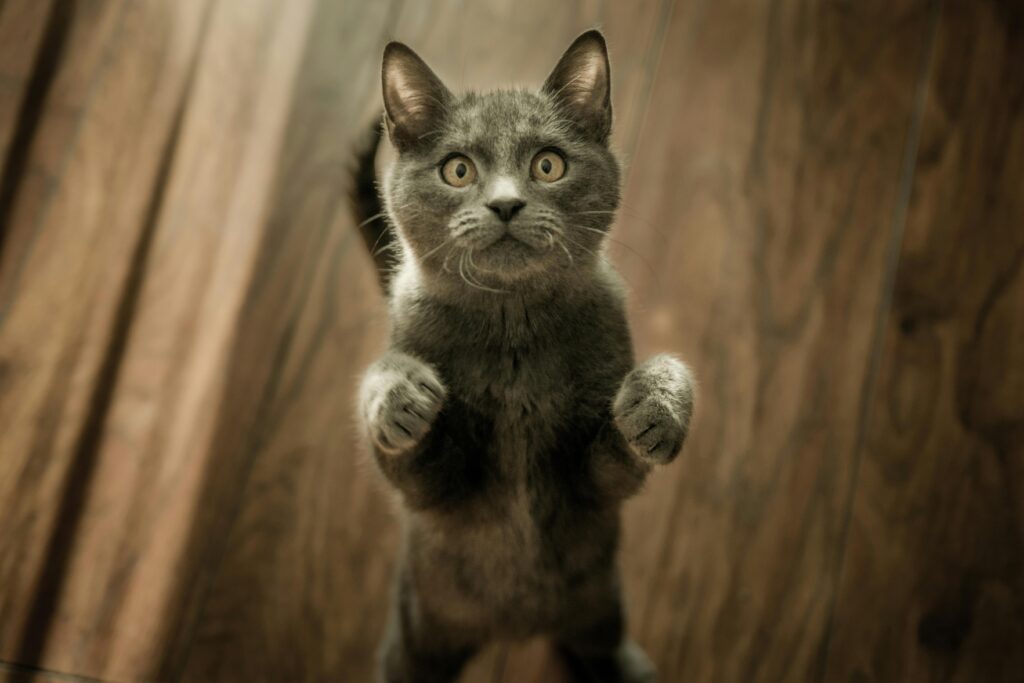Why Is My Cat Peeing Everywhere? Find Solutions Today
Are you constantly finding puddles where they shouldn’t be? When your cat starts peeing everywhere but the litter box, it’s more than just an inconvenience—it’s their way of signaling that something’s off. From underlying health issues to emotional stress or changes in their environment, many factors can drive this Behaviour. In this Article, we’ll dive deep into the surprising reasons behind this messy habit and offer practical, vet-backed tips to help you and your cat find relief. The rest of this article will go over possible causes and how to deal with the behaviour, as well as how Petmerk can guide you through it.
Common Medical Causes of Overactive Urinary System
The most common cause of inappropriate urination in a cat is a medical issue. Anatomy makes males more prone to urinary tract and bladder problems. Taking a closer look at the possibility of a medical cause will be helpful in assisting you to catch an early warning sign.
1. Urinary Tract Infections (UTI)
This is not very comfortable for a cat, and they will steer clear of the litter box if they feel lousy. The condition typically results from an infection caused by bacteria, which can be treated in virtually all cases if it is diagnosed soon enough. Aside from straining and frequent urination attempts, a UTI may consist of:
- Changes in water consumption: The cat increases drinking to counteract the emergence of pain or the cat completely rejects water.
- Behavioral changes: The infected cats may be withdrawn and hide often and also avoid attention because of pain.
Prompt vet care for UTIs will ease the pain of the cat, but other complications that may arise will be seriously dangerous because of untreated UTIs.
2. Kidney stones
Mineralization in the bladder causes bladder stones of sizes ranging from small to very large. The flow of urine is generally obstructed and could seriously jeopardize a cat’s life if not dealt with promptly.
- Diagnosis and treatment: Generally, it is diagnosed during the performance of X-rays or ultrasounds. Often it decides the treatment by size and location, which sometimes demands mere dietary adjustments, medication, or in most severe cases, surgical removal.
3. Kidney Disease
Kidney disease is common in older cats and manifests as an inability of the kidneys to remove waste products. Eventually, this may result in increased urination and thirst. The progression in symptoms of kidney disease is as follows:
- Increased thirst and urination: The kidney cannot retain water; it keeps on finding ways to pass urine frequently.
- Poor quality coats: Animals suffering from kidney-related diseases usually have poor quality or thin coats.
- Vomiting or anorexia: This is because the end-stage renal disease makes one feel sick and lose appetite.
Kidney disease would require proper management under veterinary care, diet control, and periodic blood investigations to gauge the functions of the kidneys.
4. Diabetes Mellitus
Polydipsia polyuria and weight loss are some of the clinical signs that are manifested in diabetic cats. A diabetic cat might have polyuria and therefore might have spills outside the litter box, which can be frustrating to clean up. Management of diabetes in cats typically involves:
- Insulin therapy: Most diabetic cats need a daily injection of insulin.
- Diet: A low-carbohydrate diet may help regulate blood sugar levels and improve symptoms.
5. Thyrotoxicosis
Hyperthyroidism is an endocrine disorder state under which the thyroid gland becomes hyperactive and thereby causes excessive thirst, urination, and other behavioral changes. Some common signs of hyperthyroidism are:
- Increased hunger: They often feel a heightened sense of hunger but lose more weight.
- Hyperactivity: Hyperthyroid cats appear more restless, or noisier.
One would test for the existence of thyroid hormones in the blood to diagnose and drugs, dietary modification, and radioactive iodine therapy are some treatment options among others.
6. Pain or Discomfort
Painful conditions, like arthritis and injuries, can associate pain for a cat so she avoids using the litter box. Arthritis makes it painful to get into a high-sided box, and inappropriate urination can be the result of this. Other indications of pain include
- Reduced grooming: As they are hurting, they probably don’t groom themselves as much.
- Change in sleeping habits: They may change their sleeping patterns; choose softer places, and avoid high roofs.

Behavioral Causes of Inappropriate Urination
Behavioral problems can be corrected very easily by either changing the environment, routine adjustment, or gentle training. The following are the most common reasons why cats urinate due to behavioral factors.
1. Tension and Anxiety
Cats are creatures of habits so, they get stressed when anything small is altered within their routine and environment. Examples of stressors are:
- Loud noise: Fireworks, thunder, and construction outside the house will scare the cat and alter its behavior.
- Changes in the house: Not even a new furniture arrangement or the addition of some extra pieces would disturb the cat.
- New pets or people: The introduction of a new pet or person within the house sets off territorial anxiety and marking behavior.
Cats may feel reassured when they respond to calming pheromone diffusers that emit artificial forms of the natural feline facial pheromone, so your cat will feel secure. Using bedding, favorite toys, and scratching posts can establish safe spaces to help cats adjust to a change.
2. Litter Box Issues
Sometimes, even inappropriate urination itself can occur right from the litter box. Consider this:
- Box size and variety: Cats like a big enough box in which to turn with considerable ease. Low-sided litter boxes work very well best for older cats or those affected by arthritis.
- Normal cleaning: Cats are very concerned animals, cleanliness-wise. When the litter box has become soiled they begin looking for cleaner latrines.
- Privacy: They like silent places with minimum passing traffic. Avoid the place with noisy machines like a washing machine or electric dryers.
3. Territorial Marking
Unneutered male cats, being instinctive, mark territories. It is essentially because of hormonal effects and the instinctive urge to proclaim domination in their area of operation. Thus, neutering can usually impact marking behaviors, especially if done before sexual maturity.
Managing Vehement Meowing
Over-vocalization may be accompanied by inappetence and incontinence, as your cat may try to express her distress or even pain. Some reasons your cat might meow include:
- Separation anxiety: Some cats are overly attached to their owners, meowing continually anytime they leave.
- Health Issues: Older cats develop hyperthyroidism and the cats that are suffering from dementia meow since they are confused or just anxious.
Understanding the cause of the meowing can provide insight into potential solutions and whether veterinary intervention is necessary.
When to Seek Veterinary Care?
If your cat shows one of the above symptoms, go to the vet.
- Pain or burning during urination
- Increased frequency of urination and thirst
- Untimely fluctuations in her behavior, appetite, or weight
(He would probably carry out urinalysis, blood tests, and imaging tests to detect the underlying causes of this condition. Get PetMerk Consultation.)
Management activities are provided to manage inappropriate urination.
Once the cause has been determined, treatment for inappropriate urination often involves some combination of environmental manipulations and focused treatments.
-
Appropriate hygiene practices
Don’t let your cat go back to precisely the same spot he used before caused by urination due to an enzymatic cleaner. That will remove the smell. Domestic cleaners do not eliminate the stench, which might attract your cat to go there again.
-
Providing Multiple Litter Box
The rule of thumb is to give one litter box per cat and then one extra litter. For a multi-level house, it is prudent to have at least one box on each floor.
-
Setting a Calm Environment Limit inappropriate urination
Make your cat’s life as stress-free as possible. Some pretty obvious changes may make all the difference sure there are high perches, comfortable beds, and pure dedicated playtime.
-
Conduct Veterinary Requirement Plans
In case the cause of that issue is a medical condition, work closely with your veterinarian for the treatment recommended which may include medication, diet changes, or regular check-ups for monitoring the progress of your cat.
Avoid Later Problems
The best method of prevention of recurrences is preventive care. To do this:
- Routine vet visits: Most early signs of health problems can be found before they become serious.
- Monitor water intake: Observe how much your cat drinks as a change in thirst or the pattern in urination may be indicative of malfunctioning kidneys.
- Provide mental stimulation: Toys to play with, scratching posts, and enrichment activities can be used to calm and prevent undesirable behaviors.
How Petmerk Can Help?
At Petmerk, we are perfectly sure that work here is not easy; there are health complications of a cat and behavioral problems simultaneously. Our team will help you to develop an action plan regarding making your cat live a happier and healthier life and much more: diet advice, behavior management, regular check-ups, and much more.
Common mistakes to avoid
Most people commonly make mistakes regarding incontinence in the following ways:
- Punish your cat: Cats are immune to punishment. This will, therefore, make anxiety worse and increase the cases of urinary disorders.
- Medical inaction: Denial of the fact that inappropriate urination is a concern can delay veterinary intervention, with several health complications arising from this delay.
- Neglect of litter box: This results in frequent cleaning and maintenance. Cats are essentially clean animals, and an untidy litter box often makes them pee in inappropriate places.
Conclusion:
After getting a clue about the underlying reason for your cat’s urination problem, curing might begin to solve the problem and thereafter follow regular behavior. Appropriate care, changes to their environmental condition, and veterinary assistance might be necessary for a pet to regain its earlier routine. At Petmerk, we want to support pet owners with the most useful pieces of advice, resources, and meticulous care to keep their feline friends cheerful and healthy.

